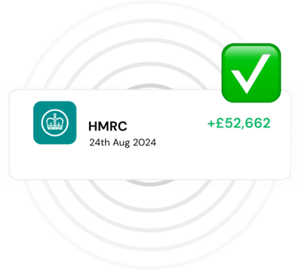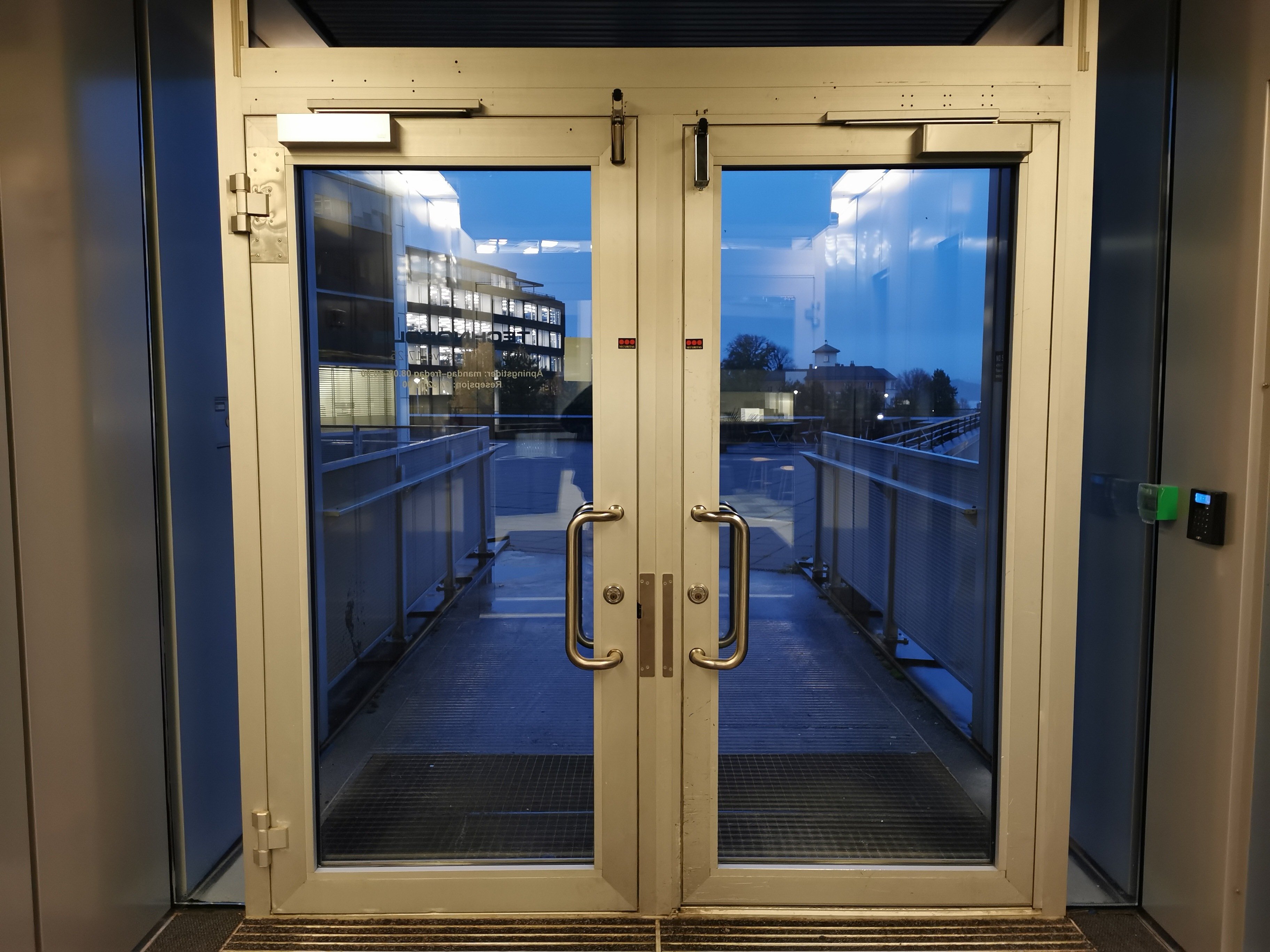R&D Tax Credits For The Architecture Sector
Get the sector experience you need to make a successful R&D tax relief claim
QLC helps architecture companies accelerate their R&D claims with our streamlined portal and expert team.


Our architecture experience
With many years of experience helping architecture companies take advantage of R&D tax incentives, QLC understands the unique challenges and opportunities in your industry. We've helped many architecture businesses claim millions in R&D tax credits. Let QLC help you.
Find out more in our architecture sector success stories below:
How much could you claim?
The average R&D tax claim in the manufacturing sector
For your own quick estimate, you can use our easy-to-use R&D tax calculator:
£ 47 k
Architecture R&D Tax Relief success stories
See how we help architecture companies leverage R&D tax relief to innovate, improve machinery performance and reduce costs.
CASE study 1
Transforming High-Rise Architecture
Developing a tall building into student flats and studio apartments

The brief
Our client embarked on a challenging project to transform an existing tall building into high-quality student flats and studio apartments. Their goal was to achieve an aesthetically accomplished design while meeting strict fire regulations imposed on high-rise structures. The main challenge was to develop a design that balanced fire safety, structural demands and aesthetic objectives—an undertaking that required novel solutions not available in the public domain.
The solution
The project required an innovative approach to meet the conflicting demands of structural integrity, fire safety and aesthetics. Working closely with the client, we approached the solution in stages:
- Material feasibility studies: The client began by researching potential materials, conducting feasibility studies to assess options that could balance fire safety with structural resilience. With limited industry knowledge on using non-standard materials in high-rise settings, each option required thorough modelling and testing.
- Load and performance modelling: The architects simulated various materials’ load capacities under different stress conditions, taking directional forces and building height into account. To meet the fire regulations, the team simultaneously tested for thermal performance, ensuring that the materials could withstand both the structural and fire safety demands.
- Iterative design process: Based on modelling results, our client developed novel structural details in an iterative process. By experimenting and adjusting their designs, they arrived at solutions that not only met the fire and structural requirements but also achieved the desired aesthetic standard, which would not have been possible with conventional industry designs.
The results
The final outcome was an advanced design that met all regulatory and aesthetic requirements. Through the R&D process, the client successfully developed a unique solution that surpassed standard practices, balancing fire safety and structural performance with visual appeal.
Claiming R&D tax credits
This project qualified as R&D due to the technological uncertainty involved in using non-standard materials in a tall building and the development of novel structural details. With QLC’s expertise, our client successfully claimed R&D tax credits, securing essential funds to reinvest in future architectural innovations.
This case exemplifies how R&D in architecture can yield advanced solutions that go beyond compliance, enhancing both form and function in challenging projects.

Success stories
What Our Clients Say About Us
"I am really impressed with the efficiency of your work, and the results you got for our company. A very friendly, committed and obviously hardworking team. You made the whole process very easy."
Will Tompkins (Director)
Vintage and Classic Cars
"QLC successfully claimed credits for the past 2 financial years, this year was even better. They managed the application and claimed the R&D credit prior to our annual tax bill, making the whole process quicker, easier and more efficient than last year."
Andrew Forbes (Director)
Architecture
"A massive thanks to all your team, obviously with the current situation, this money couldn’t have come at a better time."
Ian Cooke (Director)
Engineering
"From our experience we have always found QLC to be efficient and thorough in their tax appraisals, carefully guiding us through the often complex process. They have a very approachable team, all of which have been able to offer excellent advice when needed."
Ben Reed (Director)
Architecture
"They are proactive and efficient in performing their service and I have been impressed by their dynamism."
Chris Wright (Director)
Motorsport Engineering
"Your company did exactly what you said it would do. It took far less time than the other company that we had used in the past. We are extremely pleased with the outcome."
Adrian Smith (Company Sec)
Manufacturing Firm
"I am really impressed with the efficiency of your work, and the results you got for our company. A very friendly, committed and obviously hardworking team. You made the whole process very easy."
Will Tompkins (Director)
Vintage and Classic Cars
"QLC successfully claimed credits for the past 2 financial years, this year was even better. They managed the application and claimed the R&D credit prior to our annual tax bill, making the whole process quicker, easier and more efficient than last year."
Andrew Forbes (Director)
Architecture
"A massive thanks to all your team, obviously with the current situation, this money couldn’t have come at a better time."
Ian Cooke (Director)
Engineering
"From our experience we have always found QLC to be efficient and thorough in their tax appraisals, carefully guiding us through the often complex process. They have a very approachable team, all of which have been able to offer excellent advice when needed."
Ben Reed (Director)
Architecture
"They are proactive and efficient in performing their service and I have been impressed by their dynamism."
Chris Wright (Director)
Motorsport Engineering
"Your company did exactly what you said it would do. It took far less time than the other company that we had used in the past. We are extremely pleased with the outcome."
Adrian Smith (Company Sec)
Manufacturing Firm
CASE study 2
Building a Better Fire Door
Enhancing safety, strength and cost efficiency

Our client aimed to develop an improved fire door that surpassed existing products in strength, safety, fire resistance and cost-efficiency. Previously sourcing fire doors from third parties, they faced COVID-related supply issues, prompting a shift to in-house production. This move was not merely about replicating current designs but about creating a superior product that would set them apart from competitors and exceed the minimum standards required for UKAS certification.
The solution
To achieve these goals, our client undertook a thorough R&D process, balancing performance enhancements with cost-effectiveness. Each step of the development involved:
- Component research and selection: The client researched various materials and component combinations to identify those that would enhance strength, fire resistance and durability. The complexity of fire door construction required attention to detail across multiple elements to meet stringent industry standards.
- Iterative design and testing: Multiple prototypes were created, including 3D renders and mini door samples. Each prototype was tested by a certifying body against key metrics such as acoustic performance, smoke leakage and durability. The testing and refinement cycle continued until the client achieved their targeted performance levels.
- Cost-effective engineering: In addition to performance improvements, the client focused on maintaining a competitive price point, ensuring that their fire door designs provided superior quality without escalating costs.
The results
After an iterative design and testing process, the client successfully developed a high-performance fire door that exceeded standard metrics and achieved cost efficiency. This product not only met the UKAS certification standards but also distinguished itself from competitor offerings, meeting the client’s initial vision of a durable, reliable and advanced fire door.
Leveraging R&D for continued innovation
With QLC’s guidance, our client successfully claimed R&D tax credits, enabling them to reinvest in further product advancements. This funding not only covered part of the project costs but also set the stage for continued innovation in their manufacturing processes. This case highlights how R&D tax credits can empower companies to push the boundaries of product performance and gain a competitive edge in their industry.

Common R&D activities in the architecture sector
Below is a comprehensive list of R&D activities in the architecture sector that may be eligible for R&D tax relief in the UK.

Sustainable and innovative building materials
Material research
Developing or testing new materials that enhance building performance, reduce environmental impact, or improve durability.
Energy-efficient materials
Exploring and testing materials that improve insulation, reduce energy consumption, or contribute to sustainability.
Recycled or upcycled materials
Developing ways to integrate recycled materials into construction to improve eco-friendliness and meet regulatory standards.
Structural and design innovation

Unique building shapes and designs
Designing and validating innovative building structures to optimise aesthetics, functionality and stability.
Load-bearing analysis
Conducting research and testing to ensure non-traditional designs meet structural safety standards.
Wind load and seismic resistance
Developing structures that can withstand high winds, seismic activity, or other environmental factors.

Sustainable design and energy efficiency
Green building design
Researching and implementing sustainable features, such as green roofs, rainwater harvesting and solar panels, into building projects.
Energy modelling and simulation
Using software to simulate energy performance and identify potential savings during the design phase.
Optimising natural light and ventilation
Designing systems that maximise natural lighting and airflow to reduce energy needs.
Digital and advanced design technologies

Building information modelling (BIM)
Developing custom BIM solutions or extending BIM capabilities to meet complex design needs.
Virtual reality and 3D modelling
Using VR or advanced 3D modelling to test spatial arrangements, improve client understanding and reduce the risk of design errors.
Automation in design processes
Implementing automation or AI tools to optimise workflows, generate design alternatives, or streamline repetitive tasks.

Environmental and site impact assessments
Environmental impact research
Conducting studies to predict and mitigate environmental effects on building sites, including assessments of biodiversity, water usage and waste.
Geotechnical studies
Investigating soil properties and their implications for building foundations and stability.
Digital twin technology
Developing digital replicas of manufacturing processes or equipment to simulate performance, identify inefficiencies and test potential improvements.
Smart building technologies

IoT-enabled designs
Integrating Internet of Things (IoT) technology to improve building automation, energy efficiency and occupant experience.
Energy management systems
Developing systems for monitoring and optimising energy use in commercial or residential buildings.
Smart lighting and HVAC
Researching automated systems for lighting, heating, ventilation and air conditioning to maximise comfort and energy savings.

Fire safety and building compliance
Advanced fire-resistant materials
Developing materials that enhance fire resistance, ensuring compliance with safety regulations.
Evacuation modelling and planning
Conducting simulations to optimise evacuation routes and improve overall building safety.
Regulatory compliance innovation
Researching new techniques or materials to meet increasingly stringent health, safety and environmental regulations.
Why choose QLC?
QLC and our portal help businesses like yours claim R&D tax credits and tax relief faster and more successfully than ever.

End-to-end service

Easy-to-use customer portal

Faster payouts than our competitors

See your money in 16 days

Flexible comms

All sectors and sizes

No minimum fee

Stakeholder transparency
Manufacturing R&D tax credit FAQ
What qualifies as R&D in architecture?
R&D in architecture includes activities that involve overcoming scientific or technological challenges. This might involve developing new materials, improving building processes, experimenting with sustainability measures, or enhancing design technologies like BIM to meet specific, complex requirements.
Are design and planning activities eligible for R&D tax relief?
Yes, if these activities involve addressing technical uncertainties—such as creating designs that must meet unique structural, environmental, or regulatory needs—they may qualify. For example, designing a building to withstand specific environmental conditions or using novel materials could be eligible.
Can sustainable design projects qualify for R&D tax credits?
Absolutely. If your sustainable design efforts require experimentation and innovation (like creating energy-efficient building methods or developing new ways to incorporate eco-friendly materials), they can qualify as R&D.
Do I need to create something completely new for it to qualify as R&D?
No, R&D can include enhancing or improving existing processes, products, or services. If you're making significant improvements to existing methods or designs (e.g., improving BIM for better accuracy in complex builds), it may qualify as R&D.
What documentation do I need to support my claim?
Documentation is essential. Keep records of project goals, design challenges, testing processes, and results. Notes on design iterations, technical drawings, testing reports, and even emails discussing project progress can all help support your R&D claim.
Form Title
How do R&D tax credits benefit my business?
R&D tax credits provide a reduction in your corporation tax or, if you’re not profitable, a tax credit that offers cash back. This funding can be reinvested into your business, allowing you to tackle more innovative projects.
Can I claim R&D tax credits for using new software like advanced BIM modelling?
Yes, if you’re advancing BIM technology or using it in an innovative way to solve specific architectural challenges (e.g., achieving higher accuracy for high-risk facilities), these activities could qualify as R&D.
Are there specific areas within architecture that commonly qualify for R&D tax credits?
Yes, common qualifying activities include research on sustainable building materials, modular construction methods, structural design for unique environmental conditions, BIM advancements, and developing bespoke solutions for high-risk facilities.
Are prototypes or design iterations considered R&D?
Yes, creating prototypes or going through design iterations to test and refine concepts is a core part of R&D, especially when these steps aim to resolve technical uncertainties.

Many architecture companies work with specialist advisors like us to ensure they maximise their claims and comply with HMRC’s requirements. Why not get in touch or start a trial of our R&D tax claim portal?